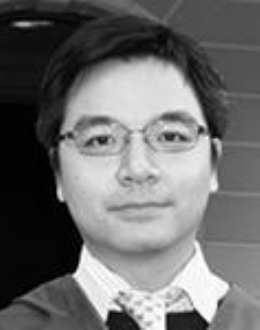
Architecture

YANG Feng
Associate Professor
EMAIL: yangfeng@tongji.edu.cn
Room 109, Building A, CAUP, Tongji Univ.
Research Fields
climate-responsive urban design, and passive and low-energy architecture
Research Profile
Dr. YANG Feng is currently Associate Professor at College of Architecture and Urban Planning, Tongji University. His research focuses mainly on climate-responsive urban design, and passive and low-energy architecture. In the past five years he has published seventeen peer-reviewed papers, among which four are SCI indexed, five are EI indexed, and one is AHCI indexed. An elected member of Youth Committee member , China Green Building Council (CGBC), he also serves as manuscript reviewers for a number of international journals, including Journal of Building and Environment, Architecture Science Review and Journal of Indoor and Built Environment. He is Principle Investigator of a China National Natural Science Fund (NNSF) and an Fund of Innovative Program of Shanghai Municipal Education Commission, and Co-Investigator of two NNSF.
Current Courses
Introduction to climate-responsive design (Year-2, B.Arch Tongji-UNSW)
Graduation thesis (Year-5, B.Arch)
Grands and Awards
As Principle Investigator
China National Natural Science Fund (No.: 51208361): Climate-responsive design strategies for high-density urban areas: A methodology based on thermal atlas. Jan 2013 ~ Dec 2015.
Innovative Program of Shanghai Municipal Education Commission 2015 (No.: 15ZZ020): Energy-efficiency and Low Carbon Building Design and Renovation in dense urban area: A study based on Thermal Atlas System. Jan 2015 ~ Dec 2017.
Fundamental Research Funds for the Central Universities of China: Neighborhood-scale microclimate design and optimization based on urban climate zoning (UCZ). Jan 2012 ~ Dec 2013.
Open fund from the Key Lab of Ecological and Energy-saving study in high-density habitat, Ministry of Education China: Empirical study on the impact of site planning and landscape design on outdoor and semi-outdoor thermal comfort at Shanghai Expo 2012. Jan 2011 ~ Dec 2012.
As Co- Investigator
China National Natural Science Fund: Conservation and ecological renovation of sports architecture. Jan 2012 ~ Dec 2015.
China National Natural Science Fund: A study on BIM-integrated green building design strategies for performance architecture. Jan 2014~Dec 2017.
Publications
Yang, Feng*, Qian, F., & Lau, S. S. Y. 2013, Urban form and density as indicators for summertime outdoor ventilation potential: A case study on high-rise housing in shanghai. Building and Environment, Vol.70, pp. 122-137(SCI/EI)
Yang, Feng*, Lau, S. S. Y. & Qian, F. 2011, Urban design to lower summertime outdoor temperatures: An empirical study on high-rise housing in Shanghai. Building and Environment, Vol.46 (3), pp. 769-785.(SCI/EI)
Yang, Feng*, Qian, F., & Lau, S. S. Y. 2011, Thermal Comfort Effects of Urban Design Strategies in High-Rise Urban Environments in a Sub-Tropical Climate, Architectural Science Review, 54(4), 285-304 (EI)
YANG Feng* and Lau, S. S. Y., 2010, Factor urban canopy shading into outdoor microclimate assessment, Journal of Habitat Engineering, Vol.2(2), pp. 87-94.
YANG Feng*, Lau, S. S. Y. and Qian Feng, 2010, Summertime heat island intensities in three high-rise housing quarters in inner-city Shanghai China: building layout, density and greenery. Building and Environment, Vol. 45 (1), pp. 115-134(SCI/EI)
 ABOUT US
ABOUT US




